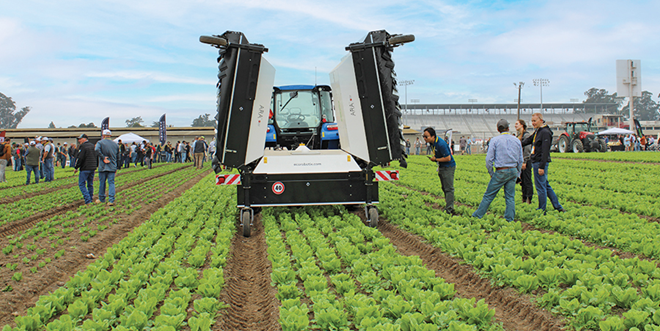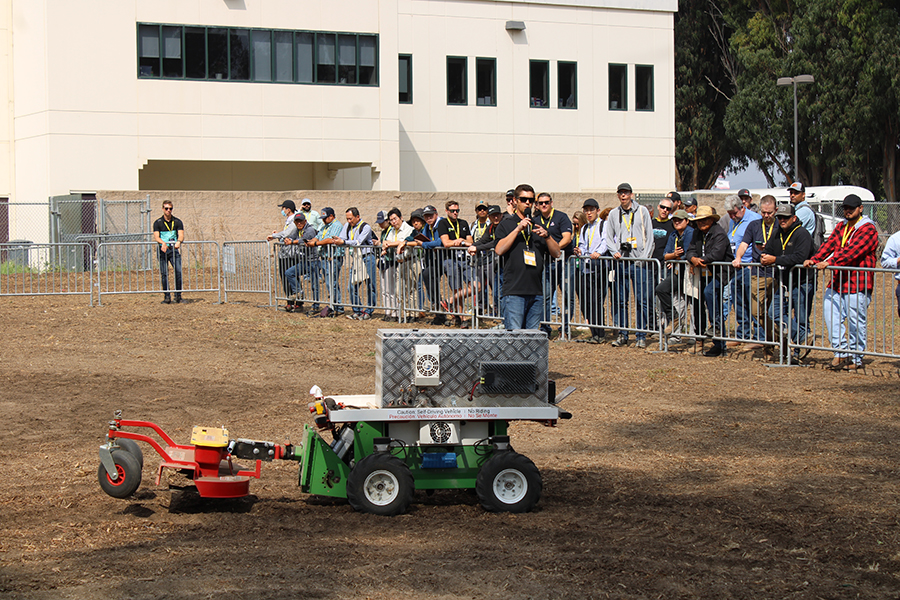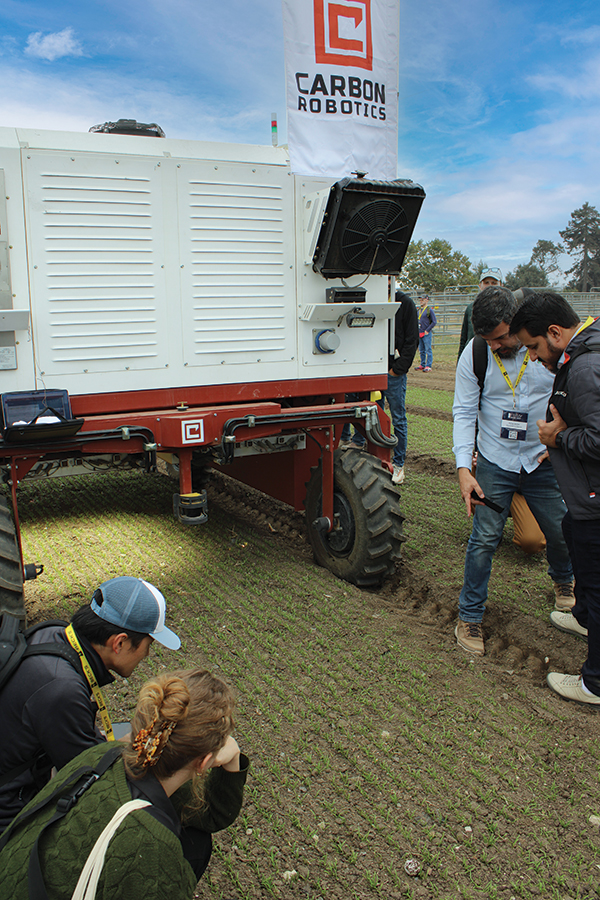

Jan 23, 2024FIRA USA sessions: Do your homework before adopting robotics
As growers seek automated solutions to solve some of their labor challenges, they and tech companies are working to determine how soon that can become a reality.
Some of the considerations were tackled during sessions at the Sept. 19-21 FIRA USA in Salinas, California. Growers offered perspectives on when they think robotics, automation and technology is ready to help them.


“It needs to solve the problem we have,” said Josh Ruiz, senior director of ag technology and innovation at Duda Farm Fresh Foods. “If it doesn’t make dollars, it doesn’t make sense to us. That’s a big, big piece of this vibe. I would love to have everything that’s out there and have multiples of them, but if I can’t financially justify it on paper, I can’t do it.”
A key need is educating tech companies and investors on agriculture’s unique needs. Most existing technologies are venture capital (VC) funded, and a lot of money is generally behind them with investors seeking top-line revenue benefit.
“Don’t be afraid to push them to pay for everything,” said Josh Roberts, president and general manager of Triangle Farms, a Salinas grower of conventional and organic lettuce and broccoli. “As a consumer and a user having some experience in that, I would suggest that we need to leverage those technology firms as much as you possibly can before you pull the trigger.”
Roberts offered advice: Make sure to ask the right questions. Learn about the company’s field trials. Educate yourself. The tech might be “shiny and look cool” but there has to be a return on the investment.
Given their fragility, berries are a particularly difficult crop to automate, said Matthew Hoffman, plant health technology lead-Australia for Driscoll’s.


“First and foremost, we need to try to solve our problems and I want to leave it up to those companies to offer solutions to solve those,” Hoffman said. “It’s a gray area. Sometimes we want to put effort into helping that company solve their problems so they can solve all problems.
“But I kind of want to put the pressure on the AgTech ecosystem to come to us for solutions.”
Again, the bottom line is return on investment.
“If at the end of the day, I have to do funny math to make it work, if I do this and if I move this here and if I allocate a little depreciation on this or that, just to make it work, that’s not the kind of stuff I’m interested in,” Ruiz said. “It should be very cut, clear and dry. It’s not complicated. We shouldn’t make it complicated. And I think too often we do, unfortunately.”
Renting vs. owning is an important decision for growers who try to ensure they create the most value on how they bring technology to their fields. Because it deals with many unknowns, a service-based model may work best for smaller growers with fewer than 500 acres, who may not be able to afford to purchase or spend $25,000 a month on renting, Roberts said.
“As it’s cheaper in some instances for them than owning, the farmers have found out that it’s better to go to the service model,” he said. “Technology changes fast. Our tagline’s kind of ‘ownership is over-rated.’”
Andrew Holtz, director of mechanized equipment development for D’Arrigo Brothers of California in Salinas, explained how the company created a robotic romaine heart harvester, an end effector, through heavily investing in a rigorous and collaborative development process. The robots are from one vendor while the controls are from another. Much of the early work was finding the right building blocks and pieces in discovering tech that helped fill a large operational gap, he said.
“We’re in the specialty crop business, and there’s no one paint-color company that builds everything we need,” Holtz said. “We knew that was something we had to develop for ourselves inhouse, and then from there, we just scaled. We have moved from one crop to another, but it’s a long process and ongoing.”
One of the things D’Arrigo discovered was that merely dropping a robot into a system and expecting it can be adapted to harvest according to how crops are grown doesn’t work.
“We have to expect to modify the environment a little to accommodate (the tech), whether it’s robotics or mechanization, automation of some kind,” he said. “You have to expect to modify everything else. You can’t just engineer the machine. It’s a systems-based approach.”
Larger operations growing thousands of acres are more likely able to risk rolling out large capital investments, so scale is a factor. “It’s important to understand what your true problems that you’re trying to resolve are, and what value you’re looking to bring back,” Roberts said. “And really organizing the way that your invoice flow is and allocating your costs so when you run your ROIs, you can truly know what you’ve spent.”
Too often, businesses spend more or less than what owners thought.
“The most important is understanding the ROI from your own perspective,” Roberts said. “It’s not what they tell you. You need to do the work yourself. You need to make sure that you actually have the problem that they tell you that you do.”
Salinas-based Pacific Ag Rentals, which provides equipment and technologies to customers throughout the West Coast, markets Visionweeding’s Robovator, an automated weeder that can replace nearly a dozen field workers.
“If you looked five years ago, there were three weeders, now there’s 30,” said Bartley Walker, president and managing member. “You can zap it, you can shoot it, you can pull it, pluck it, fire it, you can do anything to a weed now. It’s really great to see that competition come in and really give them the ability to go through and look at, ‘Hey, what’s going to work out on our farm?’”
Pacific is collaborating with Burro, an autonomous mobility firm, involving a grape picker that moves a wheelbarrow carrying 150 pounds of grapes.
“Now they have a little machine that follows them around that really needs to have a Yeti on it going to the beach,” Walker said.
Because a worker isn’t hurting his back from all the manual labor, the tech is making it easier for workers by allowing them to engage in personal activities on Saturdays.
“There’s a lot of things that we’ve seen recently that are really starting to help the worker with doing what they do,” Walker said.
— Doug Ohlemeier, assistant editor
Top photo: ARA, an Ecorobotix precision sprayer, uses AI to target weeds.














